News
EPJE Colloquium - Electrification of wind-blown sand
- Details
- Published on 11 December 2013

A new Colloquium in EPJE by Xiao-Jing Zheng introduces and reviews the fundamental laws of the electrification of wind-blown sand and their influence, and highlights the challenges in this field.
The electrification of wind-blown sand is a typical complex system characterised by nonlinearity, randomness, multi-field coupling between thermal diffusion, E-fields and sand movements, as well as trans-scale processes with multi-phase media. Owing to the complex mechanism and the influence of the electrification of wind-blown sand [19], a number of issues remain poorly understood. These include: (1) why sand particles get charged during wind-blown sand movements; (2) how many electric charges a sand particle acquires; (3) why the electric polarity of sand particles is related to the particles’ size; (4) what the change law of wind-blown sand E-fields is, and (5) how to predict the intensity and influence of wind-blown sand E-fields.
EPJ D Highlight - Sharpening the focus in quantum photolithography
- Details
- Published on 11 December 2013
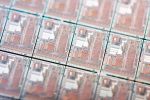
A new protocol, exploiting the quantum properties of materials, makes it possible to improve the accuracy of photolithography by addressing its physical limitations due to diffraction
Photolithography uses light beams to design thin geometric patterns on the substrates of semiconductors used in microelectronic devices. This is achieved using a chemical reaction on a light-sensitive chemical, called photoresist. The trouble is that the phenomenon of light diffraction does not permit highly accurate patterns. Often, the edges of stripes have low contrast, the distances between the stripes and the stripes’ width are limited by what is referred to as Rayleigh’s diffraction limit. Now, a scientist from Russia has developed a quantum lithography protocol designed to improve the resolution of this technology. The findings of George Miroshnichenko, a physicist at Saint-Petersburg National Research University of Information Technologies, Mechanics and Optics, in Russia, have just been published in EPJ D.
EPJ B Highlight - A step closer to composite-based electronics
- Details
- Published on 19 November 2013
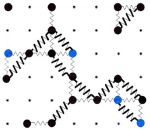
A new study demonstrates that electrical resistivity obeys a staircase-like dependence on the conducting particle concentration in composite materials
Composite materials are of increasing interest to physicists. Typically, they are made of electrically conducting elements - such as spherical metallic or elongated carbon particles - embedded in an insulating glass or a polymer matrix. Their controllable electrical resistivity combined with their light and flexible properties, makes them suited for applications in flexible electronics. Now, a theoretical model, confirmed experimentally, elucidates how electrical resistivity varies with the concentration of the particles in these composite materials. These findings have been published in EPJ B, by Isaac Balberg and colleagues from the Hebrew University in Jerusalem, Israel.
EPJ D Colloquium - No qualms about quantum theory
- Details
- Published on 19 November 2013

The alleged shortcomings of quantum theory do not hold up to scrutiny, as the theory proves sound for the prediction of probability of events connected to the fate of sub-atomic scale particles
A colloquium paper published in EPJ D peers into the alleged issues associated with quantum theory. Berthold-Georg Englert from the National University of Singapore reviews a selection of the potential problems of the theory. In particular, he looks into cases when mathematical tools are confused with the actual observed sub-atomic scale phenomena they are describing. Such tools are essential to provide an interpretation of the observations, but cannot be confused with the actual object of studies.
EPJ B Highlight - Revisiting quantum effects in MEMS
- Details
- Published on 12 November 2013
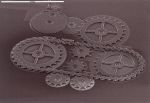
New calculations shows that the influence of quantum effects on the operating conditions of nanodevices has, until now, been overestimated
Micro- and nano-electromechanical devices, referred to as MEMS and NEMS, are ubiquitous. These nanoscale machines with movable parts are used, for example, to trigger cars’ airbags following a shock. They can also be found in smartphones, allowing them to detect how to adequately display the screen for the viewer. The trouble is that, as their size decreases, forces typically experienced at the quantum level start to matter in these nanodevices. Mexican physicists have studied the mechanical and electrical stability of MEMS and NEMS, depending on the plate thickness and the nature of the material used. The results have now been published in EPJ B by Raul Esquivel-Sirvent and Rafael Perez-Pascual from the National Autonomous University of Mexico, in Mexico City.
EPJ E Highlight - Levitating foam liquid under the spell of magnetic fields
- Details
- Published on 06 November 2013
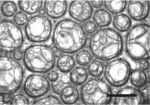
No better solution to studying ever-draining foams than applying a strong magnetic field to keep the liquid in the foam at a standstill by levitating its water molecules
Foams fascinate, partly due to their short lifespan. Foams change as fluid drains out of their structure over time. It is precisely their ephemeral nature which has, until now, prevented scientists from experimentally probing their characteristic dynamics further. Instead, foams have often been studied theoretically. Now, Nathan Isert from the University of Konstanz, Germany and colleagues, have devised a method of keeping foams in shape using a magnet, which allows their dynamics to be investigated experimentally, as recently described in EPJ E.
EPJ B Highlight - Numerical validation of quantum magnetic ordering
- Details
- Published on 16 October 2013
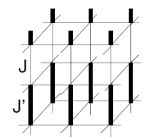
Numerical simulations designed to confirm the magnetic characteristics of 3D quantum materials largely match the theoretical predictions
A new study set out to use numerical simulations to validate previous theoretical predictions describing materials exhibiting so-called antiferromagneting characteristics. A recently discovered theory shows that the ordering temperature depends on two factors—namely the spin-wave velocity and the staggered magnetisation. The results, largely consistent with these theoretical predictions, have now been published in a paper in EPJ B by Ming-Tso Kao and Fu-Jiun Jiang from the National Taiwan Normal University, in Taipei.
EPJ E Highlight - Uncovering liquid foams bubbly acoustics
- Details
- Published on 14 October 2013
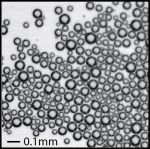
First study to shows specific sounds’ speed and attenuation characteristics in liquid foam, opens the door to new type of sound proofing material
Liquid foams fascinate toddlers singing in a bubble bath. Physicists, too, have an interest in their acoustical properties. Borrowing from both porous material and foam science, Juliette Pierre from the Paris Diderot University, Paris, France and her colleagues studied liquid foams. They used an impedance tube to measure the velocity and attenuation of acoustic waves in liquid foams in a broad frequency range. The study published in EPJ E is a first in the literature. It could help in assessing any liquid foam’s bubble size or in designing the optimal foam structure for sound proofing.
EPJ D Highlight - Uniformity: the secret of better fusion ignition
- Details
- Published on 07 October 2013
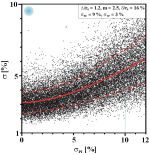
Fusion is one of the holy grails of energy production. Now, theoretical physicists have used simulations to investigate the uniformity of irradiation at the ignition stage of thermonuclear fusion reaction.
One of the ways to achieve thermonuclear fusion is through a controlled reaction between two light variants of hydrogen, called deuterium and tritium. Mauro Temporal, from the École Normale Supérieure Cachan, in France, and colleagues have made theoretical calculations indicating how best to improve the ignition stage of fusion reaction. Their approach, described in a paper published in EPJ D, involves increasing the uniformity of irradiation using high-power laser beams on the external shell of a spherical capsule containing a mix of deuterium and tritium.
EPJ E Highlight - Understanding the evolution of lungs through physical principles
- Details
- Published on 01 October 2013
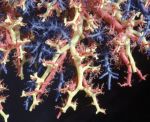
How fluid dynamics and transport shaped the structure of our lungs in the course of evolution.
Two French physicists, Bernard Sapoval and Marcel Filoche from École Polytechnique in Palaiseau, France, suggest in a study published in EPJ E how evolution has shaped our lungs through successive optimisations of physical parameters such as conservation of energy and speed of delivery.




